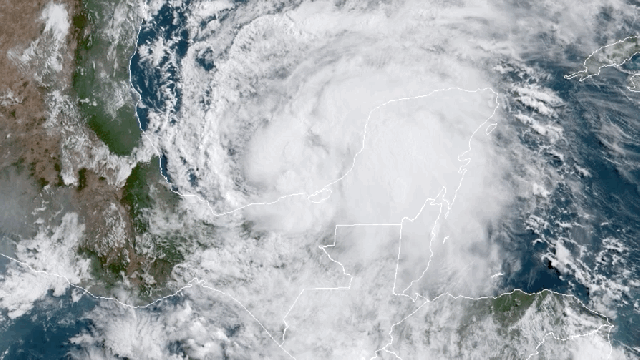Tropical Storm Cristobal spun up on Tuesday in the Gulf of Mexico. It’s the third tropical cyclone of the Atlantic hurricane season that only officially began on Monday, and marks the earliest third storm on record.
Forecasts called for full of stress.
While Cristobal’s precursors were fairly wimpy and short-lived, the new storm has already caused serious damage. It traversed from the Pacific, where it was Tropical Storm Amanda, dropping heavy rain in El Salvador and Guatemala that caused floods and killed at least 15 people. Rechristened as Cristobal, the storm continues to rake the Mexican states of Tabasco, Veracruz, and Capeche with up to 25 inches of rain and tropical storm-force winds as it basically does a lazy loop through the end of the week.
By the weekend, the storm should finally cruise over the open waters of the Gulf. By early next week, it’s slated to potentially make landfall along the Gulf Coast. It is way too early to talk about impacts on the U.S. so for the moment, it’s wait-and-see territory.
But what is striking is Cristobal’s formation itself. The storm follows Arthur and Bertha as the third tropical storm of the Atlantic hurricane season. The season nominally starts on June 1, but this is the sixth year in a row of the first named storm forming before that official date. Tropical Storm Arthur formed in mid-May, and Tropical Storm Bertha formed last week and immediately made landfall in South Carolina. Cristobal makes three tropical storms to kick things off.
There are two main ingredients for a tropical storm, broadly speaking: warm oceans and a relatively calm atmosphere. Both have been in plentiful supply in the Atlantic basin, helping to kickstart the hurricane season early.
Tropical storms generally spin up when winds stay calm in the upper atmosphere. A lot of wind moving in multiple directions — something meteorologists call wind shear — can essentially rip tropical storms apart or stop them from forming in the first place. There are a number of natural factors that can drive shear, particularly El Niño. But that periodic warming of tropical Pacific is nowhere to be seen right now, opening the door to more spinning storms.
“Vertical shear along the East Coast of the U.S. has generally been lower than normal…during the second half of May,” Phil Klotzbach, a hurricane expert at Colorado State University, told Earther in an email.
Then there’s the oceans side of it. When oceans are hot, more water can evaporate and act as fuel to power up storms. Bernadette Woods Placky, the chief meteorologist at Climate Central (and someone I used to work with there), told Earther in an email that with “both the Gulf of Mexico and western Atlantic running very warm,” the oceans are definitely helping generate storms. Large parts of the basin are anywhere from 1.8 to 3.6 degrees Fahrenheit (1-2 degrees Celsius) above normal. The area where Cristobal is currently spinning is one of the hot spots, which is helping fuel the copious rainfall piling up in Mexico.
Woods Placky noted that there’s been a trend in the satellite era that started in the 1970s where more storms get named earlier in the season. Going further back, the data gets more murky, since observations systems in, say, 1903 weren’t quite as sophisticated as those available today. That means it’s not quite as simple as saying there’s a clear climate change link to more early season storms. It’s still an area of active research, though warmer oceans being one of the hallmarks of climate change feels like it could make that connection more likely.
The early season run of storms is likely to slow down, and Klotzbach said the storms themselves are not a predictor of future activity. But nevertheless the forecast he puts out, as well as forecasts from other agencies, all point toward an active hurricane season, which is bad news in the midst of a pandemic.
“The next 10 days look very active in the Gulf,” he said. “And I’m certainly on board for an active season.”
